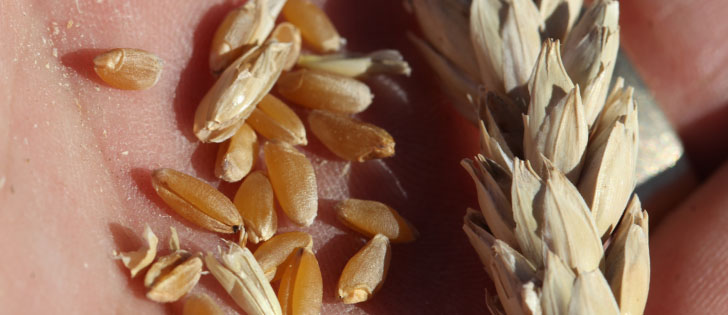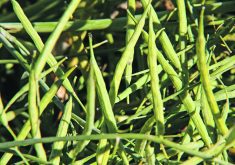Row croppers curious about strip tillage need only look south to their North Dakota neighbours for quality research results.
John Heard, a fertility specialist with Manitoba Agriculture, said strip till is still so new to northern North America that even well-funded researchers in North Dakota and Minnesota have only four years of data.
Two of those researchers shared their data with Manitoba farmers this winter.
Gregory Endres presented a Manitoba Ag Days audience in Brandon with his comparison of strip till and no-till on lighter, drier soil while Laura Overstreet talked to Manitoba soil scientists about her comparison of strip till to conventional till on heavy soils.
Read Also

Pakistan reopens its doors to Canadian canola
Pakistan reopens its doors to Canadian canola after a three-year hiatus.
“I have no problem with Manitoba using research data that’s just under our nose in North Dakota,” Heard said.
“Our growing season may be slightly shorter, but we have many of the same soil characteristics. The border doesn’t change your soil types or the technologies you need to grow crops.”
Heard cautioned against sloppy research, saying every area has examples of disasters from the early days of zero till before good research was available.
“We don’t want a repeat of those train wrecks with strip till,” he said.
“This practice has too much promise for Manitoba to flub it up with bad research. Farmers make major decisions based on those results. Some of the grower associations here (in Manitoba) have expressed interest in strip till, but they haven’t found the right researcher to tackle it yet. Until then, I have no qualms about using research funded by our American neighbours.”
Heard said Manitoba is fortunate to have a new strip till implement manufactured by Elmer’s Welding, which will be used in field demonstrations this summer, but he emphasized that this is just a demonstration and not research.
The fact that a Manitoba manufacturer is now building such implements is indicative of a good future for strip till in Manitoba, he added.
The precedent of north-south data sharing was set by the Manitoba-North Dakota Zero Till Farmers Association, which for 30 years has exchanged technology in South Dakota, North Dakota, Manitoba, Saskatchewan and Alberta.
North-south technology transfer may be as valid or more valid than east-west cross-province information exchanges, Heard said.
For more information, contact John Heard at 204-745-5644 or jheard@gov.mb.ca.
Benefits of strip tilling
- Leaves standing stubble between seed rows for moisture retention and to protect young plants from wind damage.
- In zero till and wet conditions, both fall and spring strip till warms and dries soil prior to seeding.
- Allows for early application of fertilizer and pre-seeding chemicals.
- Prepares seedbed in advance and spreads out workload so attention in the spring can focus on seed placement within the correct window of opportunity.
- Removes residue from seed row and works the soil for more accurate seed placement.
- Makes a well fractured seedbed for better seed-soil contact.
- Reduces fuel consumption compared to conventional tillage.
- Some strip till implements place seed during the strip till operation, turning it into a true one-pass operation.
- Potential to push corn, bean and other high value crops further north and west in the prairie provinces.















